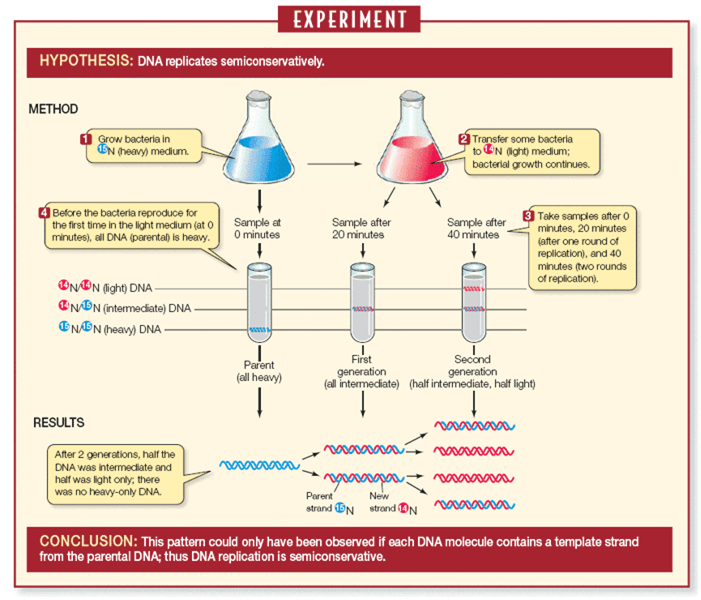 Short Answer Type
Short Answer Type(a) What do 'Y' and 'B' stand for in 'YAC' and 'BAC' used in Human Genome Project (HGP). Mention their role in the project.
(b) Write the percentage of the total human genome that codes for proteins and the percentage of discovered genes whose functions are known as observed during HGP.
(c) Expand 'SNPs' identified by scientists in HGP.
 Long Answer Type
Long Answer Type(a) Name the stage in the cell cycle where DNA replication occurs.
(b) Explain the mechanism of DNA replication. Highlight the role of enzymes in the process.
(c) Why is DNA replication said to be semiconservative ?
 Short Answer Type
Short Answer TypeDescribe the experiment that helped demonstrate the semi-conservative mode of DNA replication
Meselson and Stahl (1958) experimentally proved that the DNA replication is semi-conservative. It had the following steps;
1. E. coli bacterium was grown for many generations in a culture medium in which the nitrogen source contained heavy isotope N15 , thus the labelling of bacterial DNA was done.
2. Later on these bacteria were cultured in N14 non-radioactive isotope.
3. DNA was analysed to determine the distribution of radioactivity.
4. The experiment showed that one strand of each daughter DNA molecule was radioactive whereas the other was non-radioactive.
5. During second replication in N14 medium, the radioactive and nonradioactive strand separated and served as a template for the synthesis of nonradioactive strands.
6. Out of four DNA molecules, two are completely non-radioactive and the other two have half of molecule as non-radioactive.
This showed that DNA replication is semi-conservative.
 Long Answer Type
Long Answer Type(a) How are the following formed and involved in DNA packaging in a nucleus of a cell?
(b) Differentiate between Euchromatin and Heterochromatin
 Short Answer Type
Short Answer TypeA. Name the enzyme that catalyses the transcription of hnRNA.
B. Why does the hnRNA need to undergo changes ? List the changes hnRNA undergoes and where in the cell such changes take place.
Unambiguous, universal and degenerate are some of the terms used for the genetic code. Explain the salient features of each one of them.
A number of passengers were severely burnt beyond recognition during a train accident. Name and describe a modern technique that can help hand over the dead to their relatives.
